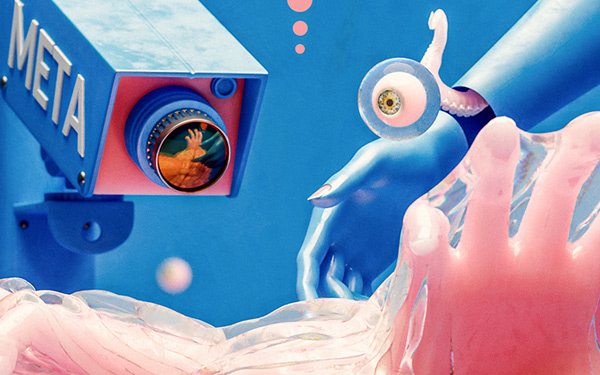Render farms are powerful tools in the world of 3D animation and visual effects. They offer the computational horsepower required to bring complex scenes and animations to life. In this blog, we'll address the top 10 frequently asked questions about render farms, offering insights and guidance for both beginners and seasoned professionals.
1. Are Render Farms Worth It?
Render farms are incredibly beneficial for a variety of reasons, particularly in enhancing efficiency and teamwork in 3D projects. Some key benefits include:
-
Continuous Workflow: One of the major advantages of using a render farm is that it allows artists and designers to continue working on other aspects of their projects while rendering is happening. This parallel workflow significantly boosts productivity and helps in meeting project deadlines.
-
Collaborative Environment: Render farms enable teams to work collaboratively on projects. Team members can monitor each other's progress, make real-time adjustments, and ensure consistency across the project, all while rendering tasks are being handled simultaneously by the farm.
-
Time-Efficiency: With a render farm, rendering tasks that would normally take hours or even days can be completed in a fraction of the time. This speed is crucial for meeting tight deadlines and for iterative design processes where quick turnaround times for renderings are needed.
-
Tile Rendering: Some Render Farm like Drop & Render can do something called Tile Rendering, meaning they split up the image into multiple tiles. This is great for still rendering. Sometimes images like these can only be rendered on a render farm due to Vram limitation if you render it as one image.
-
Cost-Effectiveness: In the long run, render farms can be more cost-effective than upgrading individual workstations, especially for studios handling multiple, resource-intensive projects.
In summary, render farms offer a combination of speed, efficiency, and quality that can significantly enhance the workflow of any 3D rendering project, making them a worthwhile investment for studios and individual professionals alike.

2. How Does a Render Farm Work?
A render farm is a collection of networked computers that work together to complete rendering tasks. Each computer, or node, in the farm contributes its processing power, speeding up the rendering process by working on different parts of the task simultaneously. So for example if you have 100 frames, each node on the farm farm will render 1 image. Meaning it will be 100 times faster to render.
3. Which is the Cheapest Cloud Rendering Farm Websites?
When it comes to finding the most cost-effective cloud rendering farm, it's important to understand that there can be significant differences in pricing across various services. Typically, render farms that own their hardware, like Drop & Render, can offer more competitive pricing. This advantage stems from not having to rent machines from third-party services like Amazon, which is a common practice among many cloud render farms.
To get a better sense of pricing, most render farms provide a price calculator on their websites. These calculators allow you to input your project's specifics and get an estimated cost, making it easier to compare prices across different services.
For a more detailed comparison, you might find the blog post "Comparing Render Farm Costs" helpful. It offers insights into the pricing of different render farms. You can read it here: Comparing Render Farm Costs.
Remember, the cheapest option may not always be the best for your specific needs. Consider factors like render times, software compatibility, and customer support when making your decision.
4. What is the Difference Between CPU and GPU Rendering?
CPU (Central Processing Unit) and GPU (Graphics Processing Unit) rendering are two different methods used in 3D rendering, each with its unique strengths.
CPU Rendering is based on the computer's main processor. It's traditionally been the standard in rendering due to its ability to handle complex calculations and its compatibility with various types of rendering software. CPU renderers are highly efficient in processing scenes with a high level of geometry complexity and are great for calculating global illumination.
GPU Rendering, on the other hand, uses the graphics card of a computer. GPUs are designed to handle multiple tasks simultaneously, making them incredibly fast for specific rendering tasks. This parallel processing capability allows GPU renderers to manage complex shading and lighting calculations more efficiently than CPUs.
The industry is witnessing a significant shift towards GPU rendering, mainly because of its speed and efficiency. Major render engines like V-Ray and Arnold are increasingly moving towards GPU capabilities. The reason for this shift is the rapid advancement in GPU technology, which has led to significant increases in rendering speeds, especially for tasks involving complex shaders and textures.
For those starting in 3D rendering, we highly recommend using a GPU-based render engine. Engines like Redshift or Octane are designed to take full advantage of GPU acceleration, offering faster render times and real-time feedback, which is invaluable for iterative design processes. This approach not only saves time but also allows for greater experimentation and creativity.
In summary, while CPU rendering still holds value for certain types of tasks, the future of rendering is leaning heavily towards GPU due to its speed, efficiency, and the ongoing advancements in GPU technology.

5. How to Optimize Render Speed on a Render Farm?
Optimizing render speed involves several strategies: reducing the complexity of your scenes, optimizing your 3D models and textures, using more efficient lighting and shading techniques, and selecting the right render settings for your project.
Here's a list of tips to help you achieve faster rendering times:
-
Simplify Your Scenes: Reduce the complexity of your scenes where possible. Opt for simpler textures, fewer polygons, and lower resolution assets when high detail isn’t necessary.
-
Optimize Textures and Materials: Large, high-resolution textures can slow down rendering. Use compressed texture formats and only use high-resolution textures where they are most visible.
-
Efficient Lighting: Opt for lighting techniques that are less computationally intensive. Use baked lighting for static scenes and be mindful of the number of light sources.
-
Use Proxies for Complex Geometry: For objects that appear multiple times in a scene, use proxy objects. This approach can significantly reduce memory usage and speed up rendering times.
-
Choose the Right Render Engine: Different render engines have different strengths. Choose one that is well-suited to your project type and the resources of the render farm.
-
Use Render-Optimized Formats: Some file formats render faster than others. Use formats that are optimized for rendering to reduce processing time.
-
Cull Hidden Geometry: Remove parts of the model that won’t be seen in the final render. This reduces the calculation required during rendering.
-
Balance Render Settings: Find a balance between render quality and render time. Sometimes, slightly reducing quality settings can significantly speed up rendering with little noticeable difference in the final output.
-
Use Render Layers and Passes: Split your scene into layers or passes. This can reduce the complexity of each render task and sometimes lead to faster overall rendering times.
-
Leverage Cloud Computing: Utilize the parallel processing capabilities of cloud-based render farms. Distributing the render across multiple nodes can dramatically speed up the process.
-
Previews and Test Renders: Before sending your project to the render farm, do low-resolution test renders. This helps identify and fix any issues without wasting time and resources on full-resolution renders.
-
Stay Updated: Keep your software and plugins up to date. Newer versions often include performance improvements and optimizations for rendering.
By implementing these tips, you can optimize your render speed on a render farm, leading to quicker turnaround times and potentially lower costs.
6. How to Calculate the Price on a Render Farm?
Calculating the cost of using a render farm can vary depending on the service provider, as many farms use different systems for pricing. However, the most accurate and common method involves using benchmark tools like OctaneBench or Cinebench. This approach bases the pricing on the performance of the machines used in the render farm. For example, if a machine is equipped with two NVIDIA RTX 4090 cards, it might have an OctaneBench score of around 2500. This score reflects the machine's rendering performance capability. Now you will pay for the Octane Bench points per hours.
For example if the price for one Octanebench would be 0,005 you will be paying 12,50 credits per hour.
7. What is SaaS and IaaS Render Farm Workflow?
SaaS (Software as a Service) render farms offer a complete package, including software and hardware, typically with user-friendly interfaces. IaaS (Infrastructure as a Service) render farms provide just the hardware, allowing users to use their own rendering software.
8. Which Computers/Servers are Used in a Render-Farm?
Render farms typically use high-performance servers with powerful CPUs and GPUs. These servers are designed for high-efficiency and durability to handle continuous, intensive rendering tasks.
On Drop & Render we use Epyc Processors for our CPUs and always the latest Nvidia Graphic cards. All machines have a minimum of 128GB of ram.
9. What are the Most Used Applications for 3D Rendering?
Popular 3D rendering applications include Cinema 4D, Blender, Autodesk Maya, 3ds Max, and Houdini. Each has its strengths and is chosen based on the specific needs of the project.
The choice of a 3D rendering application can greatly depend on the specific needs of your project. Here why you might choose one over the others:
-
Blender: Blender is a great choice because it's free and open-source. It offers a comprehensive suite of tools for modeling, animation, rendering, and even video editing. It's particularly appealing for independent artists and small studios due to its no-cost aspect.
-
Cinema 4D: Known for its ease of use and user-friendly interface, Cinema 4D is ideal for artists new to 3D rendering. It's also highly regarded by small to mid-sized studios for its versatility in motion graphics, visualization, and general 3D production.
-
Houdini: Houdini is favored for its robust capabilities in simulations and procedural workflows. It's particularly powerful for creating complex particle and dynamic simulations, making it a top choice for visual effects artists.
-
3ds Max: This application is well-suited for architectural visualizations and rendering. It has a strong set of tools for modeling and texturing, making it a preferred choice for architects and designers.
-
Maya: Widely used in the film industry, Maya is known for its advanced capabilities in handling large and complex scenes. Its comprehensive feature set for animation, modeling, simulation, and rendering makes it a standard in high-end film production.
Each of these applications has its strengths, and the best choice depends on your project requirements, the scale of production, and the specific workflows you need.
10. What is the Best Render Farm?
While there's no definitive "best" render farm as the choice largely depends on your specific project needs, here are five popular render farms that are widely recognized for their quality of service:
-
Drop & Render: Ideal for Cinema 4D and Blender users, Drop & Render stands out for its seamless integration and ease of use. It offers a one-click rendering process directly within your application, streamlining your workflow. Drop & Render is particularly known for its user-friendly tools and efficient processing. Start for free at Drop & Render.
-
Rebus Farm: A big name in the render farm industry, Rebus Farm is known for its vast experience and support for a wide range of applications. While it may be a bit pricier, its reliable tools and consistent performance justify the cost, making it a solid choice for professionals.
-
Garage Farm: Garage Farm is appreciated for its budget-friendly options and excellent customer support. It offers a good balance between cost and performance, making it a great option for small to medium-sized projects.
-
Ranch Computing: Known for its high-performance rendering capabilities, Ranch Computing caters well to demanding projects. Its robust infrastructure is designed to handle complex renders efficiently, making it a go-to for high-end production needs.
-
Render 4 You: Render 4 You offers a straightforward, user-centric approach to rendering. With its easy-to-use interface and flexible pricing, it's an excellent choice for those who prioritize simplicity and cost-effectiveness in their rendering projects.
Each of these render farms has its unique strengths, and the best one for you will depend on factors like software compatibility, budget, project complexity, and specific workflow requirements.
Conclusion
Understanding the intricacies of render farms can significantly impact the efficiency and quality of your 3D rendering projects. We hope this FAQ has shed some light on the common queries regarding render farms. If you have more questions or need assistance with your rendering projects, feel free to reach out to Drop & Render.






